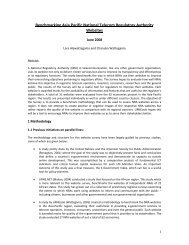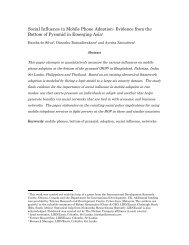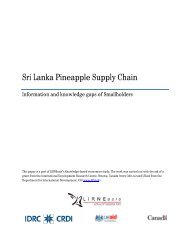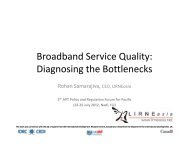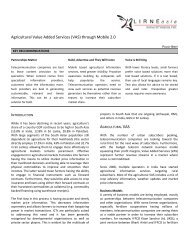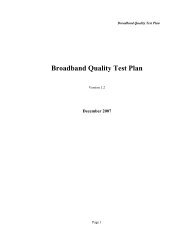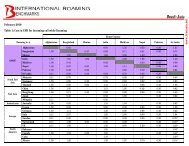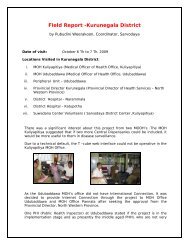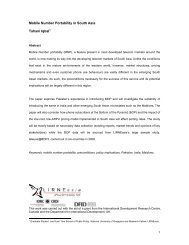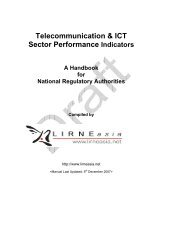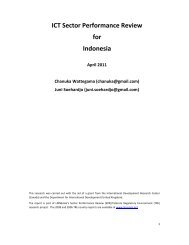Teleuse@BOP3: A Qualitative Study - LIRNEasia
Teleuse@BOP3: A Qualitative Study - LIRNEasia
Teleuse@BOP3: A Qualitative Study - LIRNEasia
You also want an ePaper? Increase the reach of your titles
YUMPU automatically turns print PDFs into web optimized ePapers that Google loves.
• On average, a slightly higher percentage of respondents belonging to the 15 – 24 age categories are aware<br />
of such services than other categories. Greatest difference between this age group and older groups are<br />
seen in the “competition polls and other live programs” category.<br />
• A greater percentage of urban dwellers are aware of such services than rural dwellers.<br />
• A significant percentage in Bangladesh, the Philippines and Sri Lanka who are not aware of mobile money<br />
remittance services, government services and agriculture/fisheries information will try such services if given<br />
the opportunity to access those via their mobiles.<br />
Innovative Coping Strategies<br />
• The most popular cost-cutting strategies used are making calls to mobiles only from mobiles making calls<br />
when the rates are lower and the use of missed calls/ring-cuts.<br />
• Use of missed calls as a cost saving strategy is most popular in Sri Lanka (39%), followed by Pakistan (33%)<br />
and Bangladesh (27%). Only 9% of those in the Philippines used missed calls.<br />
Soft Skills and Service Uptake<br />
• Payment services – Apart from “not being applicable” the most cited reason for not using Mobile 2.0 services<br />
is “not knowing how to use it.”<br />
15




